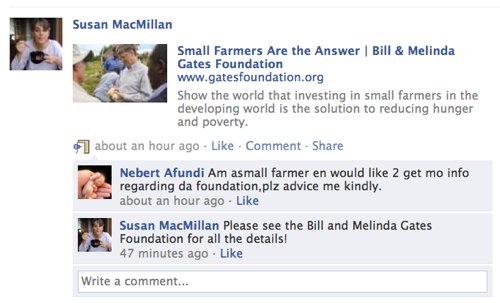This may not be quite what Bill Gates had in mind when he announced that he was crowdsourcing ideas for a speech he has to give on 24 May.

But the competition is real enough. So hop on over to the BMGF blog, read all about it, and share your ideas with the brightest and the best. And us, if you’re so minded. And if the terms allow.